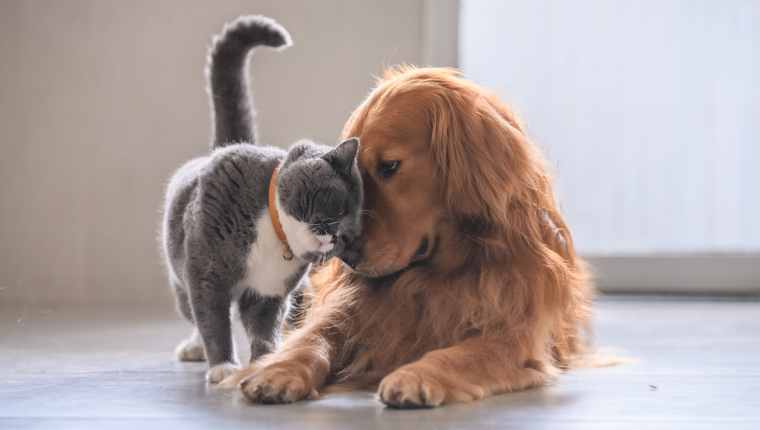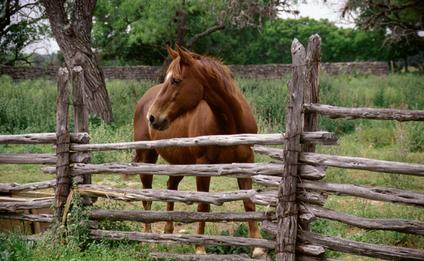ARE YOU PREPARED TO TAKE CARE OF YOUR DOGS, CATS OR OTHER PETS WHEN DISASTER STRIKES?
If not, now is the time to create an evacuation plan, to stock up on the things you will need, and to put together your pet’s grab-and-go bag (along with your own). Being prepared NOW can truly make the difference between being able to save the life of your pet when a disaster strikes…or not.

How to Prepare
Below is a partial shopping/packing list. Think through everything your pet(s) may need and add them to your list.
Food:
- Use the brand that your animal normally eats.
- Have at least enough to last one week.
- Be sure to rotate the food to keep it fresh.
- Include in your supplies a feeding and watering dish in case the one you usually use is destroyed or lost.
- Measuring cups/scoops you use for feeding.
Water:
- Have enough water to last at least one week for each pet in the household.
- Be sure to rotate the water so that it stays fresh.
Sanitation:
- CATS:
- A litter box and enough litter to last one week.
- A scooper to keep litter box clean.
- Plastic bags to dispose of animal waste.
- Dog poop bags.
- A small bottle of soap and a dishtowel for cleaning animal dishes.
- Paper Towels for various uses.
Carriers/Transport
- Dog and/or cat crates/kennels.
- Dog/cat beds
- Extra leashes and/or harnesses in case the ones you normally use cannot be quickly located/found.
Medical & Identification
Always keep ID on your pet (tag with your current information, microchip, tattoo).
In a Grab & Go Kit:
- Copies of all key veterinary records, your Pet’s microchip info and license number.
- Include your pet’s Rx prescriptions and any supplements.
- Include photos of your pet.
MORE INFORMATION ON PET DISASTER PREPAREDNESS:
https://www.aspca.org/pet-care/general-pet-care/disaster-preparedness
https://www.humanesociety.org/resources/make-disaster-plan-your-pets

Horse Evacuation
Information
Owners should be prepared in the event of a disaster. With livestock/large animals it is critical to have a plan and be ready to evacuate EARLY:
- horse trailer or contact person(s) with trailer
- horse identification:
- micro chip
- tattoo
- photos and descriptions
- animal safe paint/marker (spray or paint on your information)
- grab and go kit with information/photos, phone numbers/alternate phone numbers and any important veterinary or medical /care information
- pre-determine an alternate location to keep your horse in the event of an emergency
- kit with halter, feed and water buckets
Evacuation procedures:
- if time and notice allows, evacuate all animals with you
- if time does not allow,
- make sure your horse has some kind of identification (see above)
- do not leave halters or ropes on your horse when turning them loose — your horse can become tangled and trapped
- make sure barn doors, corrals or other shelters are closed so the horse does not return to their shelter and become trapped
- if you are not home and need assistance evacuating your horse, call PET – these volunteers are experienced in animal evacuations and will be allowed back in to rescue animals
RESOURCES on LARGE ANIMAL EMERGENCY PREPARATION & DISASTER PREVENTION
THE MORE YOU KNOW…
PET Note to readers: The following resources have been provided by Dr. Rebecca Husted, and are highly recommended. Best Horse Practices expert Dr. Rebecca Gimenez Husted trains veterinarians, firefighters, animal welfare officers, and horse owners in tackling incidents found in large animal rescue scenarios and situations, and how to create prevention solutions for their communities and facilities. She runs internationally-renowned Technical Large Animal Emergency Rescue.
FOR HORSE OWNERS, VETS, EMERGENCY RESPONSE PERSONNEL, THIS IS A SUPERB FREE WEBINAR SERIES – https://www.youtube.com/watch?v=7S76flddJ4s&list=PLp9h6qS29SfzKoUS2OZJys5cYZPckWfCv – that includes webinars on flooding prep, social license ad welfare, barn fire prep, trailering prep, Technical Large Animal Emergency Rescue (TLAER), and facility safety prep.
